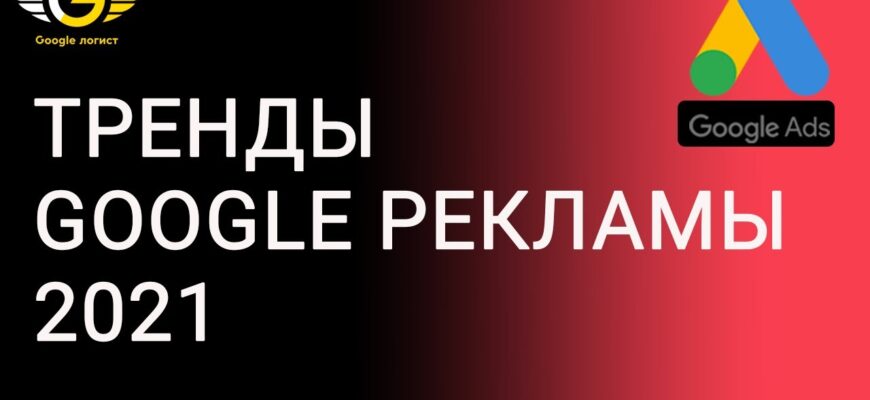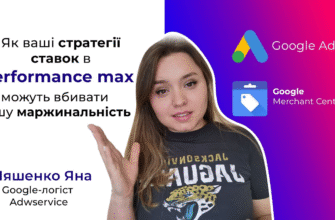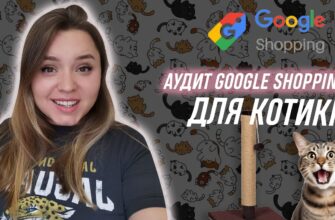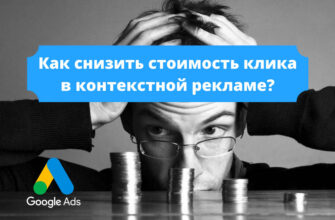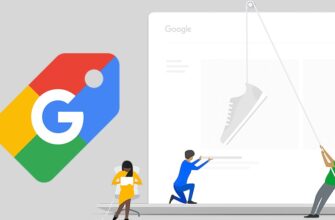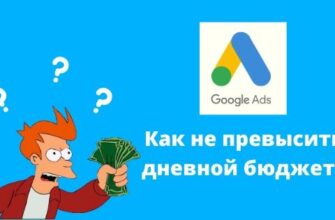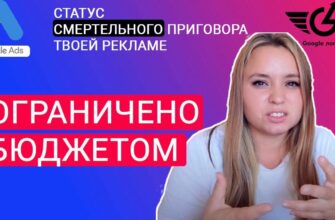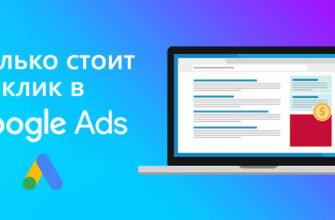Why will Google remove keyword targeting by 2022? Why do PPC players end their careers with a glass of vodka on the table, and what is being actively introduced into the US market from trends? Today we are discussing.
Hello. My name is Yana Lyashenko. I am a Google Logistician, my task is to help businesses scale and increase profitability with the help of Google advertising.
In short, today we will talk about the very current trends in the US market, which we will have to join or die – leave the Google Ads auction. In short, we start and begin.
How many calls and sales will I get by ordering contextual advertising from you?
I need to calculate the conversion of my website Describe
the task
in the application
Calculate potential ad revenue Google
contextual advertising calculator
Going online and pushing small advertisers out of the market
Let’s start with the first point. There is both good and bad news. I’ll start with a lyrical digression. The amount of money invested in online advertising in the New York region alone equaled the amount of money invested in offline advertising. This is the first time in history that online advertising money equals offline advertising. First time in history. What does it mean? Bad news. The costs will hit the wallets of most advertisers. This dynamic continues throughout the world. Where they used to invest massively offline, now they have massively migrated to online. Someone left the market amid the crisis, someone powerful entered. Powerful, because it does not have an offline market, it will now be actively advertised.
Massively, in almost all advertising accounts that I manage in the US market or advise, or my team manages, I notice a general trend – advertisers who have accumulated marketing fat or optimized business processes are now massively raising bids in the auction, thereby crowding out smaller ones advertisers and advertisers with CPC – cost per click, with a fraction of a percentage increase, they simply cannot advertise.
On the basis of what will I demonstrate this now? Based on one of the cases that my team led. I’ll just show you a few screenshots. What is the nuance? The product is a top tool that generates sales. This is a search ad. One nuance. Increasing by shares, a few cents of CPC – leads to the complete consumption of margin. Step left, step right and that’s it. Now advertising is absolutely not profitable.

There was danger here. In July, in an advertiser on Google Trends, here I will insert a link to Google Trends, everything was going great on trends, awesome and the average cost per click was around thirty-two cents. It was the most amazing time. Got 990 transactions. The average cost per click is 30 cents in the US market. The transaction price is about $20. It was considered the top month.
 < /p>
< /p>
What happens during Black Friday? Indicators began to fall around November 17 and November 25. Plus or minus – normal, expected. During these periods of time, demand begins to grow in almost all niches. Growing demand for what? For Americans, from Black Friday to the end of December, it’s just a season of discounts. Black Friday is the biggest day ever. On this day, everyone, almost everyone, buys.
By the way, there are statistics that between Black Friday and the end of December in 2019, Americans spent more than a trillion dollars. To be understood, the Russian government spends much less on its personal loved ones, only 250 billion. A trillion spent, Americans, during the period of discounts and sales.

What am I leading to? It is logical that before the Black Friday period, people are actively looking for sales, discounts, where they can buy, in bulk, not in bulk, at what price, at what discounts, coupons, other all American history.
It is expected that the volume of traffic will begin to increase and the volume of sales will drop a little. I want to show a screenshot using the example of those rates that Google has already offered in these time periods. Previously, there was a CPC in July, in the top month in terms of sales, then the average CPC was 30 cents. It was ok. This is the maximum CPC. Now advertisers have massively raised their CPCs.

Why did they do it? September-October is a declining trend, and December – the season is now starting at the client. You understand that when you start adjusting bids, changing various automatic strategies, you return to the manual CPC again in order to adjust the CPC itself – Google writes: “Raise the bid or I’ll just show less”. This means that advertisers in this niche have massively raised their rates or a large retailer has come in and killed all the other small ones.
 < /p>
< /p>
What is the threat? The top advertising campaign in terms of conversions, which provides the main income, is just now being cut in coverage. In terms of reach, it is not large enough, as it asked to raise CPCs. At different time intervals, both an increase in CPC and a decrease were tested. As soon as they increased, the marginality immediately drastically ate up. We decided to bet on automation. Now let’s move on to this point.
What’s going on in the market? Large players who have a margin reserve, ready to fight to the end, will now massively begin to increase their costs. This means that those who do not start optimizing mass advertising campaigns now, for the CIS market, guys, will have to leave the auction, die.
Full automation of advertising campaigns
There is good news. Thanks to the second trend that is now going around the world in Google advertising, I mean, it is being actively implemented in the US market, although old-school PPC people are very protesting against – full automation of advertising campaigns. Many will say, well, damn it, they write about it every year, the percentage of automatic strategies being introduced into our lives is increasing. Guys, please compare the percentage of Smartshopping that was launched in advertising accounts in the nineteenth year and in the twentieth. Can you feel the difference?
In my personal opinion, there are only three types of advertising campaigns that in the US market, on average for a hospital, work best in retail, in e-commerce. Smartshopping – unusual shopping advertising campaigns. DSA with optimization or CPA target – target cost per conversion or profitability. And search advertising campaigns with a wide match type on the top bottom keywords final stage of the sales funnel, keywords from the final stage of the sales funnel are also with an automatic strategy, CPA target, Target ROAS – target profitability. The three types of ad campaigns that make up the majority, nearly 80 percent, of retailer sales in the US market. No dynamic remarketing, no keywords with some kind of bid strategy, CPC, and so on. Full automation. Damn, ok, you say, all you need is just to start a DPO, collect keywords, smartshopping, everything is on horseback.
The main catch is that most of the PPC specialists will lose their jobs in this area due to automation. No. Not because the volume of work will decrease, because automation will make sales. No. Most PPC specialists only know how to work with averages in ad accounts. There is an average cost per click, an average conversion rate, an average CPA value for different product groups or individual product items. These are all averages. There are too many hiccups in the averages here. I’ll tell you why later.
The most important nuance is that the main task of a specialist will be to train automatic strategies in an advertising account to get the right volume and conversions at the right price. Notice an important nuance. Not to set up conversions and get them into your account and set up advertising campaigns based on them, but to train advertising campaigns to get the right conversions at the right cost. You all have a product range in a different price segment with a different price tag, with different margins. I mean, not the percentage of margin, but in currency. Because on a check of $200, $500, and $10, the margin is completely different. It is from the right, right training on the right margin, on the right positions with the right indicators that you can train the system to get the right conversions at the right cost.
Now they will say, in the comments they will write, damn it, sho for nonsense, Yana, well, damn it. Shaw, this is to teach and how to teach and what kind of porridge, some kind of porridge. I’m telling. In the CIS market, it is not yet particularly noticeable, but it is already noticeable in the EU market of search advertising campaigns and in conventional shopping, search queries are visible. It can be seen on advertising campaigns in the United States, if unscrewed. Approximately the same trend may continue in the CIS market, but not in all niches. It’s just that if the CPC is cheap, don’t feel too bad if raising the CPC by fractions of a cent is eating up margin. This will become a significant trend.
Dividing the auction into premium and non-premium
I notice that in many retail niches, the auction is divided into premium and non-premium. Take it, go to your ad account now. Find the value of the average cost per click. Take the last quarter, half a year. You don’t need to take a year – too many changes have happened. What can you see? If you take the average CPC and filter CPCs above this value, you will see traffic conversion, CPA, CPA, conversion volume, and if you filter traffic below this CPC, you will see a certain value.

What do I notice? That in most niches it is more profitable to invest and raise rates in premium traffic. In premium traffic, and not in the most budget. Firstly, it often has a lower conversion rate and CPA is not always profitable. The strategy of generating cheap traffic only works when the actual keywords are from the bottom of the sales funnel. They come in rags, as happens in trade advertising campaigns. It is logical that if I am talking about investing in premium traffic, then we will turn off all cheap requests, leave the top ones and start raising the rate on them.
How many calls and sales will I get by ordering contextual advertising from you?
I need to calculate the conversion of my website Describe
the task
in the application
Calculate potential ad revenue Google
contextual advertising calculator
One more nuance is included. Something that Googlers were talking about back in 2015-2016 when they toured around the world with presentations about micro-moments. This means that not all users, when we raise the rate, need to be shown at the rate. Someone warms up more to buy, and someone warms up less. If you enter keywords from the final stage of the sales funnel. Now the brain boiled a little.
Let’s take the same Iphone. The most common moment. The bottom keywords are either the brand model query Iphone 12, PRO, whichever was the last one. The same will happen with the phrase “Buy”. How fast will a person convert? Those who are involved in electronics retail understand and feel that it would seem that the price is the same, one of the lowest, the requests are the most targeted, they do not convert much.
The question arises when we set the average cost per click, the average, which we calculate based on conversion and others, we average the indicators for warmed up and not warmed up users. An even larger, larger percentage of users that can generate sales are above the sales funnel. It will start for these keywords, now when assigning an average cost per click, it is unprofitable for most niches. The limiting value of CPC, it is so, sometimes it happens, in some niches it is small, in cents, for example, 15-20, and the system says, I can’t release you to impressions at this CPC.
What to do? Everyone noticed the status – below the rate for the first page. The system immediately cuts coverage, does not display in impressions, you do not see yourself in the impressions. What to do?
In the product below the bid for the first page will not show. You will simply systematically increase the budget, conversions do not grow, coverage falls, narrows and you don’t understand what to do. The reason is that the rate is not enough to properly get the maximum sales.
What is the relationship between premium auction and average bid? What Google automation has now learned correctly, if it is properly trained, of course, is to set a bid, increase and decrease, depending on the likelihood of a particular user converting. All users are unique. Heading towards full ad personalization. Each of the people – he is an absolutely personal person. Our task now, in conditions of the highest competition, I mean the US market, is to be able to adapt. Call it user bending, whatever you want. If we want to get sales, we have to do it. Automatic strategy does this just perfectly, chic. Why?
Automatic strategy operation
Now, I will give, straight, real evidence of this all. I will show a screenshot from the Black Friday period November 23-29. There was a screenshot that was ready. I’ll show you a screenshot of the smart campaign in October. In October, she was fired up for a long time, the team procrastinated her for a long time, she had only 7 transactions at a not super favorable price. Haven’t thought about turning it off yet. She needed to be tightened.
 < /p>
< /p>
In the period from 23 to 29, when there was an incomprehensible fluctuation in traffic, the smart campaign, thanks to their correct training, made most of the sales at the lowest possible CPA and the profitability for this period of time during the Black Friday period is one of the highest, except advertising campaign in KMSk, and now, when I later watched the company’s ad, I saw how it scaled and increased in sales. Moreover, the cost per click, in the screenshot, is around 29 cents. During the Black Friday period, the team saddled me several times and returned the natural color. Why?

The cost per click there is in the region of a dollar, in the region of two dollars. For a project, the breakeven CPC is 32 cents. At the same time, the advertising campaign did better and CPA did better than expected. This is a confirmation that automation is better than any PPC specialist, but we do not see all the conditions of the auction, the information is maximally closed. Automation is the top-notch thing that advertising accounts specifically need now. Automation needs to be trained. You can’t educate yourself, as Google says. I have already gone through many projects where I say “Get 15 transactions and then dance.” I constantly speak in terms of product groups and so on. I give tips on how to do it. In the US market, it’s done differently. If necessary, write in the comments. I’ll make a video showing how to do it. There will be 10 comments, I will shoot a video for this process. This is the inner filling of what almost no one does.
Will Google remove keyword targeting?
The next trend, I suspect it will already happen – Google will completely remove targeting by keywords. I feel that this will happen by the end of 2022. I give an argument. Since September 2020, it has already limited the Search Query Report, a report on search terms, in the volume of search queries displayed.
If you now go specifically to an ad account, look at the statistics since September, you will see a certain volume of search queries, and then a line other, other search queries. Other search queries can eat up most of the traffic. You don’t understand what type of requests are there, you don’t understand whether there is garbage traffic or not. How to improve? How to adjust the bid if there are potentially keywords that can be added to queries?
Also, according to the latest research, I will even indicate a link to this resource, Searchengineland, published this resource, more than half of all search queries, they concern both products and search, will be entered by voice. Those who have tried to optimize in a search advertising campaign for voice search know how low-frequency queries these are. It is unrealistic to add them as a keyword to an advertising campaign. Some requests are highly converting.

Question. How to get out in this case? The only advertising campaign that allows you to target almost all low-frequency queries is DSA or DPO. Are you making a connection? Limitation of search queries, micro-moments, automatic strategies, low-frequency queries that DSA can cover? The smartest guessed what I’m leading up to? Unsubscribe in the comments.
In short, look. Why do you think there is no keyword targeting in shopping campaigns, product ads? Think Google is so smart that you thought it would be better? No. Initially, shopping campaigns were created for the largest retailers. Walmart or some other company. Why were they created for them?
Well, firstly, they were the biggest advertisers, it was easier to make money on them. Secondly, why were there no keywords? Within these companies there were no individual marketers who did not know how to set it up. They needed to deliver a turnkey solution for retailers that was more likely to be used, as opposed to search ad campaigns. These companies had developers serving this site, who entered the name of the commodity item, optimized it, did the landing page, and so on. It was easier for Google not to stimulate, hire PPC people or marketers, but simply send the technical specification to developers and sharpen, straight, the functionality, practically for IT people who simply make a feed according to a certain template, and then the system took it to work, showed it, and the client earned money.
In smartshopping, they cut absolutely possible targetings, functionality for adjustments. You can’t see requests, you can’t even see methods, placements, if we take KMSku. You can’t even see where they showed up, top, bottom, Google search, Display Network. There is one big indicator, which is called the cross-network indicator. They came up with the internetwork.

You know what? It worked great. Old school PPCs from other countries really hate Smart shopping. They don’t like her very much. She ruled out all possible adjustments, adjustments. In most cases, Smart does not work for only one simple reason – campaigns and automation, algorithms have not been taught how to get the right conversions.
I said it here, I said it. This whole bunch goes. Smartshopping has been cut. The most effective tool – they cut search queries. LF requests are increasing in volume. Do you understand what I’m hinting at? They will roll out something like a smart DSA or force everyone to switch to automation. They will start cutting, as it is now in some accounts, if they notice. Once you assign a CPC, in some niches, the reach is much less. CPC is calculated based on average conversions and margins. If you increase this bid, the advertising is unprofitable. As soon as you trust automation – class, it went well and Target ROAS can be corrected and profitability can be reduced or increased. There is absolutely simplified flexibility in managing all advertising campaigns. I strongly suspect that Google will still cut these keywords. Directly, strongly, I suspect that it will also remove keyword targeting.
Trend for new creative specialists
Based on the previous main trends, I will not delve into some trifles, you will still encounter them. They do not have significant features. The same base with which we will have to live on. I think that there will still be a trend for new specialists. It will be the guys who specialize in creatives. The fourth type of advertising – very cool for retailers in the US market – is youtube advertising. As it is not surprising, Rozetka, the top one, is used very little, you can focus on it in terms of what you can shoot for advertising. Video Specialists. Creative specialists for banners used for the display network, for regular remarketing or Facebook specialists will definitely give feedback, that a lot depends on the creative in terms of receiving feedback.
I think that the demand for people who are able to increase the conversion of a landing page on the basis of really received analytics will begin to increase. A landing page always has higher conversions than an online store. There will be a demand for specialists who can increase the conversion of product cards or an online store. If possible, now try to test all these things. Something that will allow in the conditions of the highest competition and the presence of large retailers, who, and everyone knows that Americans with an average sales receipt of 10-20 dollars are already ready for something that will not be earned from the first sale.
They have a built-in business process in such a way that they immediately resell something, add it to the cart, the manager calls, or they push the already collected contact base in some funnels and already resell. If you look at how developed the email collection system is in the US market, as opposed to the CIS market, you will feel this difference and great potential. They also have tik-tok business blogs focused on downloading checklists, buying goods, and so on in exchange for email.
You can use email in mail marketing, you can use it as targeting on Facebook to create lookalike audiences, for targeting Google ads, to create lookalike audiences. It is an endless chest of usefulness of money that you sit on. I believe that the demand for this will only grow directly.
These are the basic trends that will now start to change the Google advertising market. Do you agree with this? Have something to add or want to argue? Waiting for you below in the comments. See you in the next issue. Stop, stop, stop. Don’t forget to give this video a thumbs up, subscribe and don’t miss new interesting releases.

